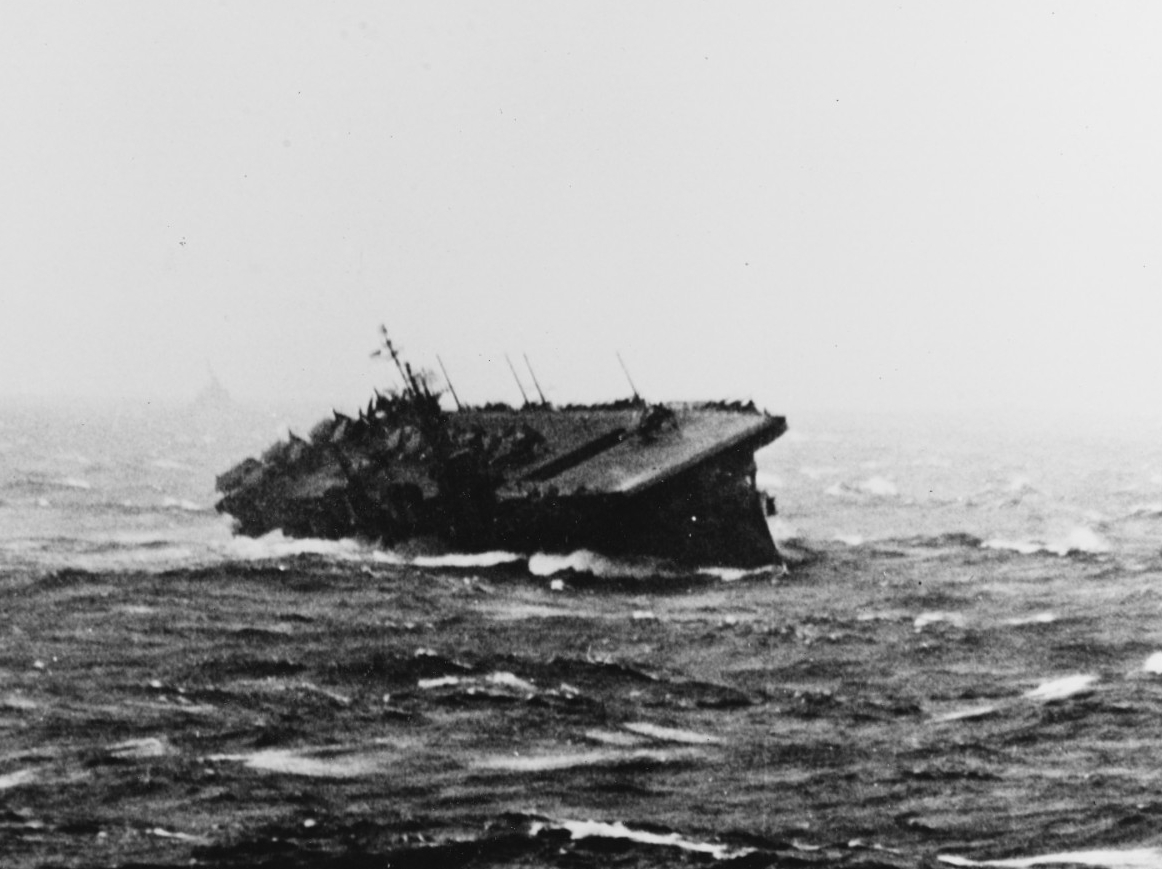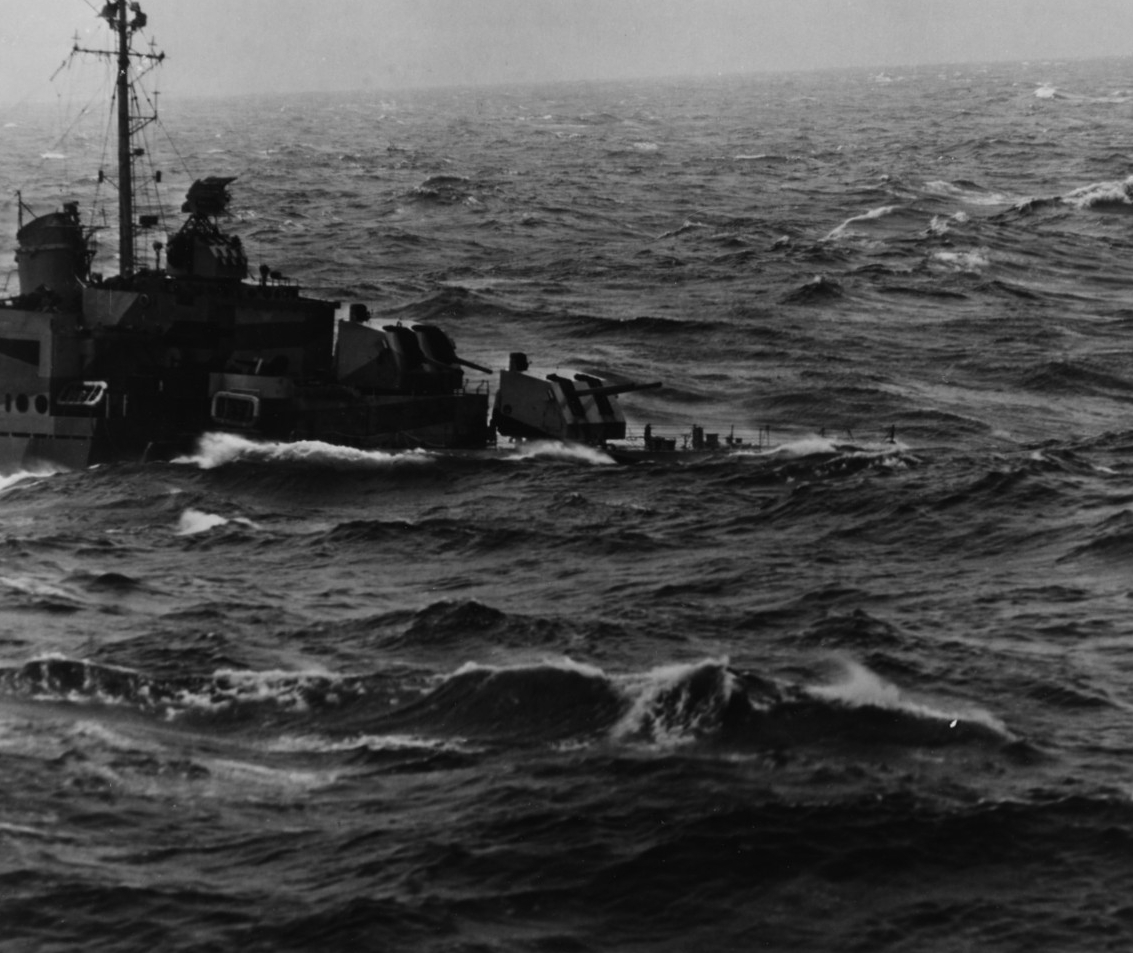OW glossary
With a strong wind and a big sea running, even quite big ships will prefer to steam into the wind, rather than take the force of wind and wave on the side or stern of the vessel.
When the vessel is turned head to wind the object is to make very little progress over the ground, just enough to keep the vessel steering and the engine speed will be adjusted accordingly. You'll see this referred to as "hove to" in the logs sometimes, a relic of sailing ship days when the main yard was hove round to the wind to stop the ship temporarily, to speak to another vessel or the like.
Of course sailing ships couldn't adopt the steamers' tactic of heading into the wind and wave and faced with a very strong blow would be obliged to put before the wind with as little sail as possible, dangerous but their safest course. Some sailing ships also do well "lying a-try", taking all sail off and allowing the ship to adapt to the weather by herself.
[dorbel]
You will also find a few river-related terms here.
Chow chow:
Rippling and and swirling water. This seems to apply to rivers rather than the sea.
https://books.google.com/books?id=wf0NA ... navlinks_s
Confused sea:
Waves of irregular heights, wavelengths and direction. Occasionally observed after seismic disturbance but more often caused by a conflict of wind, tide and/or current in relatively shallow water. Deeply annoying to yachtsmen, shouldn't bother a ship much unless they are very severe.
[dorbel]
+

Aerial photograph of confused sea state from cockpit of Coast Guard aircraft en route to the Bahamas during the Hurricane Dorian response effort. (U.S. Coast Guard photo by Petty Officer 2nd Class Cody Dickey)
Density
http://www.ric.edu/faculty/PSCI103/Seaw ... _notes.htm [Dean]
+
Density (weight per unit volume) can also be expressed as specific gravity (the ratio of the weight of a substance to the weight of an equal volume of fresh water). The average for sea water in the open ocean is 1.025. (So sea water is 2.5% heavier than fresh water.) This is the number sailors use for calculating the draft of the their ship. Some sources use 1.026 or even 1.027.
In polar waters, because of the proximity of melting ice, the surface density can change over short distances because the fresh water may float on the surface for a time before mixing into the sea water.
Sailors want to know the density of the water because their ship will float 2.5% lower in fresh water, because it is less dense. This will make the draft readings deeper, so because of legally required maximum drafts, you have to know what the density, or specific gravity, is of the water you are currently floating in. Also, it may make a difference for passing over certain shallow areas, especially sand bars at harbor entrances.
[Jeff]
+
Oceanographers go to great care to accurately measure seawater density because it determines the structure and movement of water masses relative to each other in the ocean, especially once they get deeper than the wind does (top couple hundred meters or so.)
The interaction of temperature and salinity in high-latitude waters, influenced by freezing/melting, forms some incredibly dense seawater that sinks and circulates in the depths of worlds' oceans. The long-term changes in surface seawater density caused by changes in ice fields and seasonal freezing/thawing in polar waters as the atmosphere warms have the potential to influence both surface and deep water circulation.
[camiller]
Flood tide:
Incoming tide; as opposed to ebb tide.
[Bunting Tosser]
Following sea:
A "following sea" refers to a wave direction that is similar to the heading of a waterborne vessel under way.
https://en.wikipedia.org/wiki/Following_sea [ggordon]
Ground swell:
A sudden swell preceding a gale, which rises along shore, often in fine weather, and when the sea beyond it is calm.
http://www.gutenberg.org/files/26000/26 ... 6000-h.htm
+
A broad deep undulation of the ocean, often caused by a distant storm or an earthquake.
https://www.thefreedictionary.com/groundswell
Head sea:
Sea where waves are directly opposing the motion of the ship.
https://en.wikipedia.org/wiki/Glossary_ ... al_terms#H
+
A name given to the waves when they oppose a ship's course, as the ship must rise over, or cut through each. Their effect depends upon their height, form, and speed; sometimes they are steep, quick, and irregular, so that a ship is caught by a second before she has recovered from the first; these render her wet and uneasy.
http://www.gutenberg.org/files/26000/26 ... 6000-h.htm
Shoaling:
Shoaling can simply mean becoming shallow.
https://www.thefreedictionary.com/shoaling
+
However it can also refer to effect that moving from deeper water to shallower water has on waves. In this case, shoaling is an increase in wave height that happens when waves go from deep to shallow water.
For a detailed explanation, see
https://www.sciencelearn.org.nz/resourc ... i-shoaling
Water spout:
http://www.bbc.co.uk/news/world-asia-pacific-13593871
Please post questions and suggestions for additions or changes in
Weather, sea, and ice (past, present, or future -- on Earth or elsewhere): discussion.



